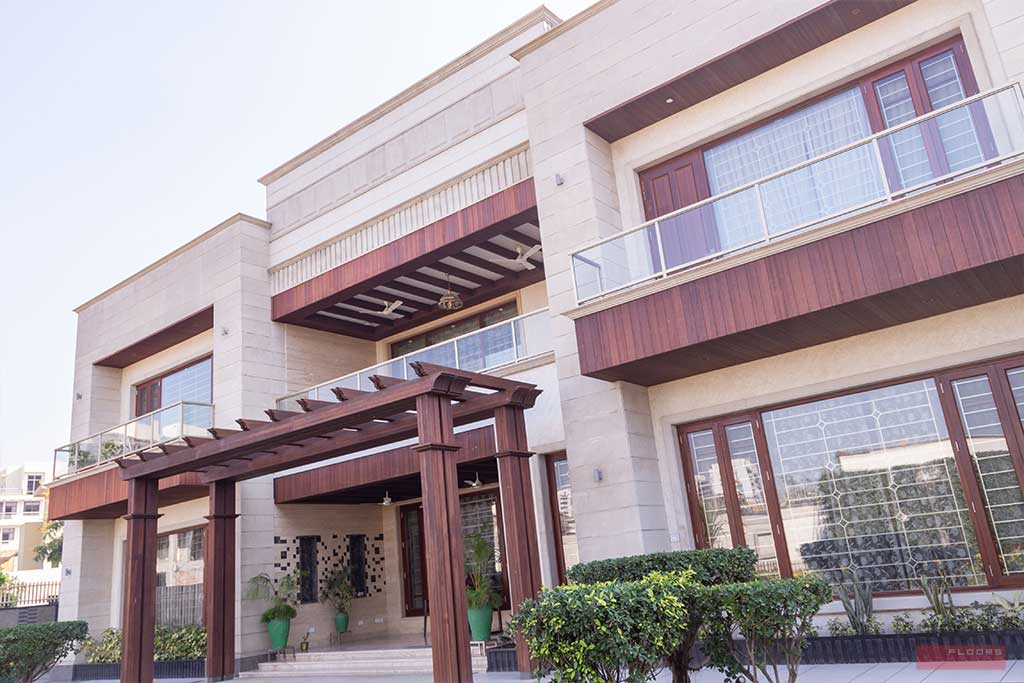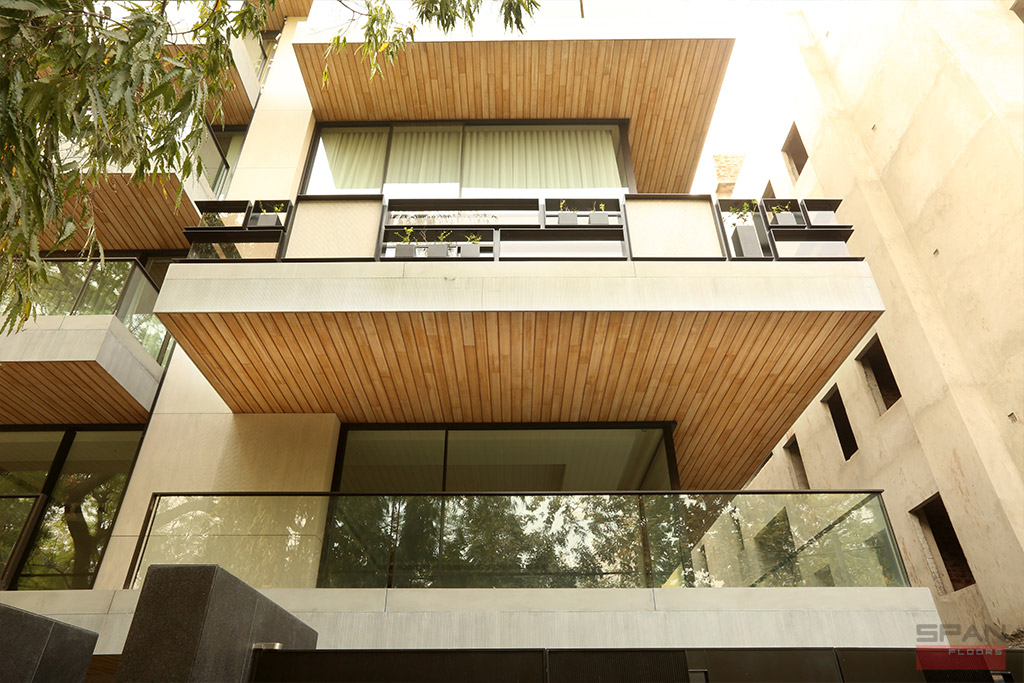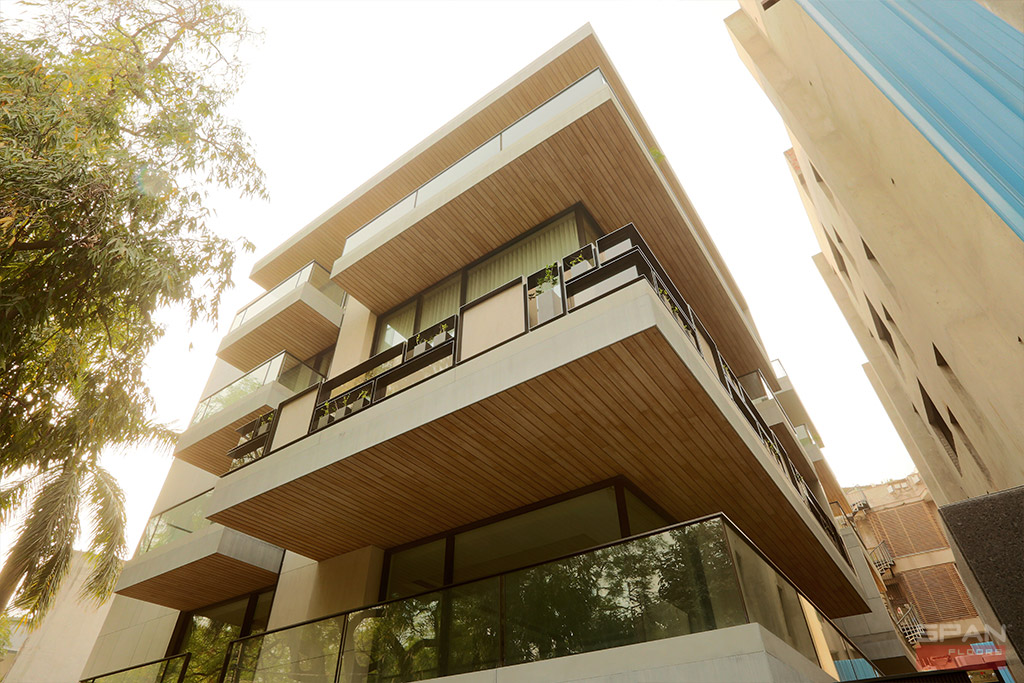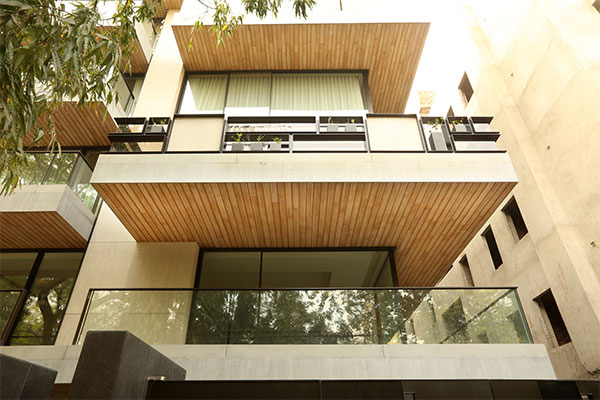A wood facade is a classic and timeless feature that adds warmth, texture, and natural beauty to a luxury home. As an Architect, whether designing a new home or renovating an existing one, specifying the right wood and fixing hardware and finishes are essential to creating a stunning and functional facade that will stand the test of time and lead to many client referrals over time.
Here’s a checklist to help you get started:
Durability and resistance of wood species
Choose a wood species known for its durability and resistance to weather elements such as rain, sun, and wind. Additionally, there is the factor of pests. Wood is a natural food for many organisms, such as termites, wood borers, and fungi, and as such, the specified products should have a proven ability to resist these. While there are many types available in the market, such as western red cedar, Ipe, thermo pine, ash, etc., at Span Floors, we have chosen to promote Vulcan wood due to its proven durability, which is backed by a warranty against termites and fungus. None of the others offer a warranty; some are particularly prone to termites, as can be verified with some testing or on-the-ground reports from the market.
Moisture resistance
Consider the moisture resistance of the wood you are planning to specify. A good idea would be to look at old projects to see on-the-ground performance rather than what’s in the book. Moisture imbalances can cause warping, swelling, and cracking, leading to a situation where the primary purpose of using wood – the aesthetic is lost. Vulcan wood comes with a predefined moisture content while leaving the factory, which is 7% (+- 2). Due to the proprietary heat and wax treatment, it remains very stable even when fully exposed to the Indian sun and rain. Here are some images that show Vulcan and other timbers in service. Notice the straightness of the wood.


See more of this project >


See more of this project >
Sustainably sourced wood products
Specify sustainably sourced wood products, such as FSC-certified wood, to minimize environmental impact. Vulcan comes from mixed FSC certification and is a sustainable alternative to natural forest old-growth Ipe, Western Red Cedar, and Teak.
Finish and maintenance
Specify a finish that will protect the wood and enhance its natural beauty, and also consider the maintenance required to keep the wood looking its best over time. Unfortunately, predominantly the finishes used in the Indian market in the unorganized sector with woods like Ipe, etc., are unsuitable and give a bad name to all wood facades and decks. Vulcan wood comes as a system with complementary finishing oils that are very low maintenance compared to what is available normally. Additionally, they come in a wide variety of color tones from Light beige to full black, allowing designers flexibility never before seen in the Indian wood facades and decking sector.
Aesthetics
Take into account the desired look and feel of the facade, including color, texture, and pattern, and ensure that the wood elements complement the overall architectural style of the home. Consider the number of knots if you are creating a facade for a luxury, high-end home. While this choice is subjective, wood with many knots is generally cheaper and associated with the lower end. Vulcan offers a clean, knot-free look, which helps create a contemporary look that is the trend today. Another thing to consider is the length of the wood planks and the fixing detail. Both of these can be a big factor in the final overall look. Long lengths are premium and give lesser joints, while the reverse is true for short lengths. An exclusive feature of Vulcan cladding is the bandsawn effect. Not only does this look gorgeous, but it also serves a practical purpose allowing the finish to last much longer, thus lower maintenance for the client.





Photo credit – Abodo

Photo credit – Abodo
Typical wood facade situation in India after a few years
As seen in the pics below, the result of unsuitable wood types coupled with incorrect hardware (fixing materials) and surface finish is not good. You do not want the project to look like this in a few years.







Very Nice